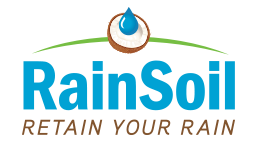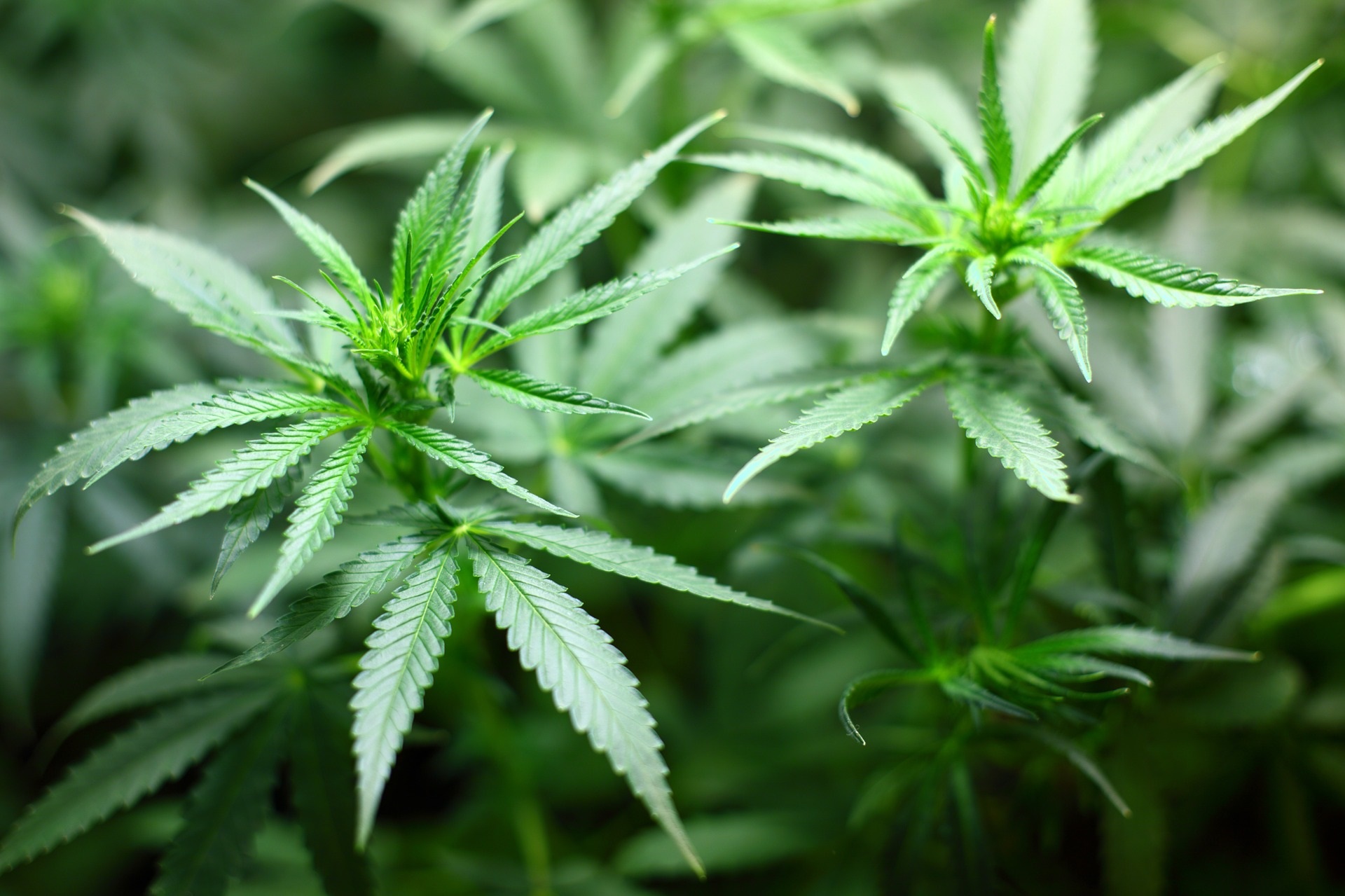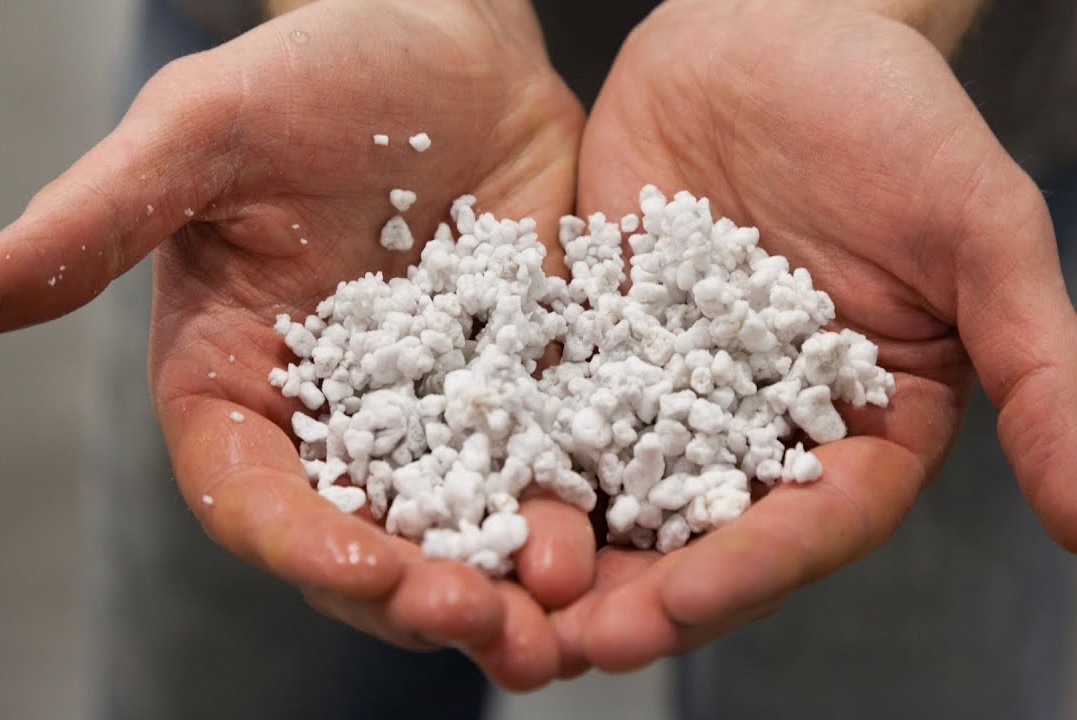In this article, Growers Network talks with Logan Leavitt of RainSoil to learn about some peat alternatives and what they have to offer.

The following is an article produced by a contributing author. Growers Network does not endorse nor evaluate the claims of our contributors, nor do they influence our editorial process. We thank our contributors for their time and effort so we can continue our exclusive Growers Spotlight service.
1. Hi Logan. Thanks for taking the time to talk with us today. I'd like to start by asking about the trends you're seeing in soil and soilless growing media?
The most noticeable is a demand for peat alternatives. Perlite products are becoming increasingly popular. We have also seen an increase in popularity of coconut coir. Another positive trend is people are educating themselves about media properties. Porosity, air-filled pore space, and container capacity are common terms known by even the most novice grower. While some of this is due to our modern information age, the cannabis industry can take some of the credit. With the rise of controlled environment agriculture – a sector where cannabis is slowly dominating – we have seen a demand for substrates that perform well in these conditions. As a result, many took a hard look at different materials and media blends. And since education is an industry priority, the unique properties, applications, merits, and drawbacks of these substrates are being presented for all to see. More importantly, the scientific concepts and terminology are carefully explained and used.

2. How is your media manufactured and distributed?
We start with the highest quality coconut coir. This coir is thoroughly rinsed to remove sodium and other soluble salts, aged to improve cation exchange and buffering capacities, and sieved to remove coarse fibers and ultra-fine particles. We import this material to our state-of-the-art facility in Las Vegas and process it into our chief product, RainSoil SS. Our semi-automated system allows us to add desired amendments, such as perlite, and moisture to pinpoint accuracy, with virtually no material waste in the process. We also offer the raw starter material as our product, RainSoil RAW. Currently we sell our products direct but are open to partnerships with distributors.
3. Where do RainSoil's substrate products go?
Our product line encompasses garden soil/topsoil, potting soil, and commercial growing media. RainSoil RAW is used by professionals and homeowners alike. RainSoil SS, or Super Soil, was designed with the homeowner in mind. This all-purpose media is suitable for hanging baskets, containers, flower beds, and home gardens. We also have a cannabis-specific blend in the works. This product will be specifically designed for controlled environment (i.e. hydroponics). We expect to officially launch it in the coming months.

4. How does RainSoil's products fit into the traditional Peatlite (Peat & Perlite), Bark, Soil, Mineral Soil mixes?
We hold our suppliers to stringent quality standards. As a result, our coir products maintain a quality above the industry norm. RainSoil RAW is OMRI-listed for organic use and registered as an Organic Input Material with the California Department of Food and Agriculture. RainSoil SS, our flagship soilless media product, is an all-purpose blend designed for home and garden use. We start with our high-quality coconut coir – no peat, bark, or wood products. Just a 100% coir base. Next, we add a proprietary amendment suite that includes a coir-specific wetting agent, a hydrogel for added water and nutrient retention, and a silicon component to boost plant stress response. We top it off with a nutrient starter charge capable of sustaining plant growth up to seven weeks without additional fertilizer. The resulting Super Soil gives average gardeners that professional edge. As mentioned before, we are also developing a growing media specific for professional cannabis cultivation. Without giving too much away, our late-stage prototype includes medium-grade horticultural perlite to create a highly aerated media with enhanced drainage. Our vision is a simple product – a material consisting of few, high-quality ingredients blended consistently and offered in convenient packaging. The final material will give the grower complete control, as it will be easily incorporated into any nutritional program.
5. What questions, misconceptions, and unknowns exist regarding the soilless components used in mixes?
A common misconception is that all perlite is the same. This is simply untrue. Perlite comes in grades from small to super coarse. For most horticulture applications, a medium grade is ideal. This size is still lightweight, so it is easy to incorporate into any media. It’s also the perfect size for creating large pore spaces necessary to introduce air to the media. Smaller grades tend to retain moisture, which restricts air space. An often overlooked factor with perlite is shipping. Larger sized perlite granules tend to break down into dust during transit. A medium grade will resist this mechanical breakdown. Most misconceptions we encounter concern coconut coir. Coir of yesteryear had a bad reputation for high soluble salts, particularly NaCl and KCl. Today the coir industry holds itself to strict standards to keep soluble salts below an electrical conductivity (EC) of 1.0 μS/cm. This is achieved by rinsing coir excessively with clean water to remove salts and sodium. Another misconception is that coir needs to be pre-buffered with calcium nitrate. The thought is that calcium ions will replace excessive sodium and potassium ions on exchange sites, thus avoiding potential calcium and magnesium deficiency. Makes sense. However, the real-world application is impractical. As mentioned before, modern coir - even coir destined for buffering - is liberally washed to leach soluble salts and sodium. The resulting material has a small amount of residual sodium and fair amount of potassium. Calcium from buffering would only remove a negligible amount of sodium. Moreover, even if calcium could effectively remove potassium, the amount of calcium added during buffering would not even dent the potassium level. Luckily, potassium is non-toxic to plants, but excessive amounts compete with calcium and magnesium uptake, leading to deficiencies of these nutrients. So regardless of whether the coir was buffered or not, a grower would still need to add a Cal-Mag fertilizer at the beginning of a crop to avoid deficiencies. Buffered coir can also cost up to 40% more than normal coir.
6. What is beneficial silicon and why is it important to plant health?
Beneficial silicon refers to silicon (Si) in its plant-available form, silicic acid (H4SiO4 or Si(OH)4). This liquid form of silicon is created when silicate minerals dissolve – a process in which water breaks down the mineral’s chemical structure by combining with the SiO2 component. Plant roots can only absorb silicon in the resulting liquid form. Silicon has been shown to help plants prevent and cope with abiotic and biotic stresses. Plants absorb silicic acid through their roots, transport it to active growing points, and deposit it into cell walls. This incorporation strengthens the plant tissue and creates a form of plant armor, which aids plants in times of stress. Recently, some research suggests that silicon acts as a catalyst in plant stress response. Silicon can kick-start the reactive oxygen species pathway, helping plants respond to stress more quickly. It also activates the production of phenolic compounds – structures that protect plants against pathogens. Specific responses to silicon depend on the plant species and environment. However, all plants utilize silicon to some extent. In fact, the element is so prevalent that researchers find it difficult to have a true control group because water, growing media, fertilizers, etc. all contain trace amounts of silicon.
7. Why is aeration important?
Roots need air, too. Adequate air space in the root zone allows roots to respire. They can easily absorb oxygen and release carbon dioxide into the surrounding media. This carbon dioxide can then diffuse to the outside air with ease. An aerated media also allows for proper movement of water and nutrients through the root zone. A poorly aerated media restricts the flow of oxygen to the roots, thus limiting plant growth. The media can also remain wet for longer periods, creating ideal conditions for pathogens. Low drainage can also lead poor nutrient movement, leading to fertilizer inefficiency.
8. Your slogan is "Retain Your Rain", talk about why Perlite is so important to hydrology, water movement, and management?
The short answer is drainage. Perlite is a critical component in growing media for controlled environments. For example, let’s consider coconut coir. While coir has excellent porosity (sometimes as high as 95%) it is still incredibly absorbent. This characteristic is desirable for some growers, but in a hydroponic setting the media should hold on to water for shorter periods. Perlite increases the large pore space of coir, allowing water to readily move through the profile. The media can then dry between irrigations. Since the coir component remains hydrophilic (water-loving), the media will still wet up easily upon the next irrigation. This way, the grower can precisely control when plants receive water and nutrients.

9. We know perlite is an aggregate to improve drainage through its pores. But the performance is dependent on the pore size. Talk to us about why a medium - coarse particle size is what you offer to your product offering?
We currently use Dicalite’s medium grade perlite in our cannabis blend prototype for a few reasons. The first is to obviously increase pore space. Medium-grade granules range from 1.0 to 10 mm in diameter. Pores of this size will easily fill with water, but also easily release water and subsequently fill with air. Perlite smaller than 1.0 mm tends to fill with water and hold it tightly – often too tightly for plant roots to access. These grades also create smaller pores, which add little air space to the media in the first place. The result can be a waterlogged media, which can create anaerobic conditions and a haven for pathogens. Another factor is shipping. Some perlite can turn to dust during transit due to mechanical abrasion. Larger grades are especially prone to this. The aggregates of a medium grade will better hold their structure during transportation.

Growers Network would like to thank Logan and Rainsoil for taking the time to talk to us about peat alternatives. What did you think readers? What's your favorite peat alternative? Join our forum and let us know! Just click on one of the "Join Now" buttons on this page. See you there!
References:
Beuchel, Troy. (2019, 29 March). Air Porosity: What Is It and How Important Is It? [blog post]. Retrieved from https://www.pthorticulture.com/en/training-center/air-porosity-what-is-it-and-how-important-is-it/ Buck, Johann. (2018, February). Silicon & Your Fertilizer Program. GrowerTalks, 81(10), 58-60.
Dicalite Management Group, Inc. Grades of Expanded Perlite & Perlite Particle Size [tech sheet]. Retrieved from https://ss-usa.s3.amazonaws.com/c/308462372/media/59bc04b6997a1/Grades%20of%20Expanded%20Perlite.pdf Dicalite Management Group, Inc.
Three Mistakes to Avoid When Choosing a Horticultural Perlite Supplier. Retrieved from https://ss-usa.s3.amazonaws.com/c/308462372/media/5ac665e001684/Dicalite%20Three%20Mistakes%20to%20Avoid%20Horticulture%20Perlite%20eBook.pdf Essington, M.E. (2004).
Soil and water chemistry: an integrative approach. Boca Raton, FL: CRC Press LLC. Huang, J., & Fisher, P. (2005, June 25).
Physical Properties of Propagation Media [Internal Report]. University of New Hampshire: Young Plant Research Center. Jackson, Brian E. (2018, April).
Substrate International, European and North American wood fiber products and perspectives. GrowerTalks, 81(12), 60-62. Kuack, David. (2015, July).
Buffering coir not necessary if it’s processed properly [blog post]. Retrieved from https://hortamericas.com/blog/buffering-coir-not-necessary-if-its/. Paramanandham, P., & Ronald Ross, P. (2015).
Scanning electron microscope analysis of coir pith after subjected to different treatments. International Journal of Research in Pure and Applied Chemistry, 2(1), 1-3.
10 Best Gift Ideas for Cannabis Connoisseurs and Growing Aficionados (2022)
December 7, 2022Developing and Optimizing a Cannabis Cultivation System
December 14, 2021Dealing with Insomnia: How Can CBD Help?
December 10, 2020Your Guide to Sleep and CBD
December 7, 2020
Do you want to receive the next Grower's Spotlight as soon as it's available? Sign up below!

Do you have any questions or comments?

About the Author
Logan Leavitt is the Research Associate at RainSoil. As the staff Science Guy, he develops products, designs research trials, analyzes data, handles regulatory compliance, and oversees quality control. He is certified as an Associate Professional Soil Scientist (APSS) and has a B.S. in Environmental Soil/Water Science from Utah State University. He can be reached at lleavitt@rainsoil.com